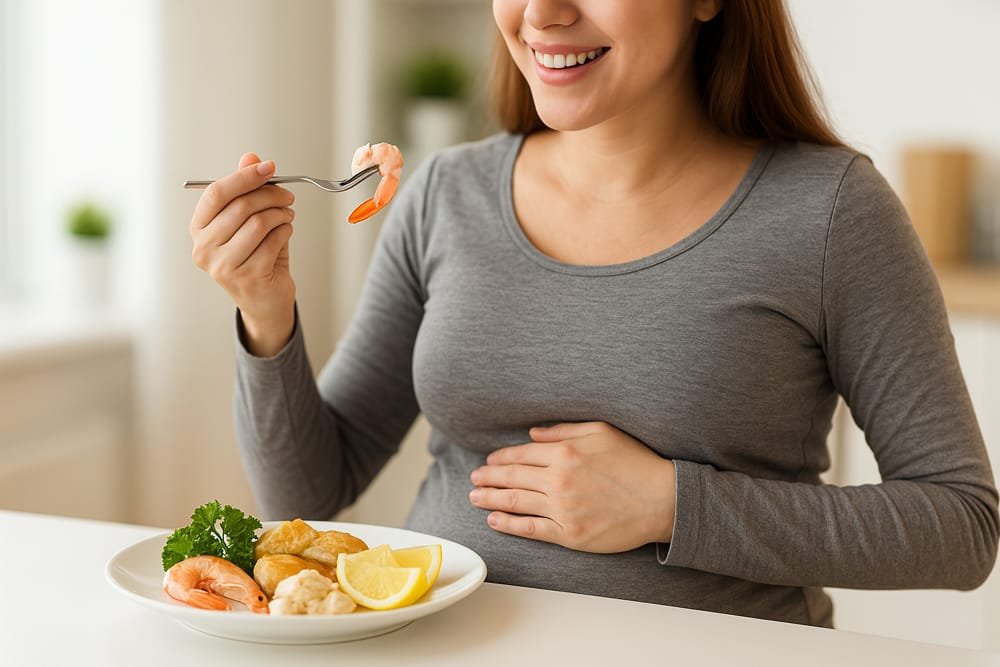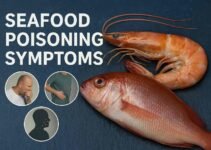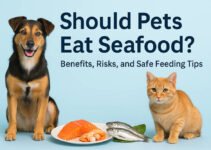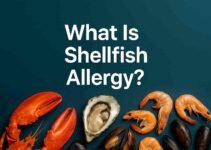Seafood is a valuable source of essential nutrients for pregnant women, including high-quality protein, Omega-3 fatty acids, iodine, and vitamin D. However, concerns about mercury contamination and foodborne illnesses make many expectant mothers hesitant to include seafood in their diets. According to the U.S. Food and Drug Administration (FDA) and the American College of Obstetricians and Gynecologists (ACOG), consuming the right types of seafood during pregnancy provides significant benefits for fetal brain and eye development while minimizing health risks. This article presents clear guidelines on which seafood is safe, how much to consume, and which types should be strictly avoided to ensure a healthy pregnancy.
Contents
- 1 What Are the Nutritional Benefits of Eating Seafood While Pregnant?
- 2 Which Types of Seafood Are Safe to Eat During Pregnancy?
- 3 Which Seafood Should Be Avoided Completely During Pregnancy?
- 4 How Should You Cook Seafood to Ensure It’s Safe During Pregnancy?
- 5 What Are the Signs of Seafood-Related Food Poisoning in Pregnant Women?
- 6 Should You Take Omega-3 Supplements Instead of Eating Seafood?
What Are the Nutritional Benefits of Eating Seafood While Pregnant?
Seafood provides four critical nutrients that directly support fetal development and maternal health: Omega-3 fatty acids, high-quality protein, iodine, and vitamin D.
- Omega-3 Fatty Acids (DHA and EPA): These nutrients are essential for the development of the baby’s brain, eyes, and nervous system. According to the World Health Organization, a daily intake of 200–300 mg of DHA is recommended during pregnancy to optimize cognitive development.
- High-Quality Protein: Pregnant women require approximately 71 grams of protein daily to support fetal growth. Seafood like salmon and cod provides easily digestible, complete protein sources.
- Iodine: Iodine deficiency can lead to developmental delays and low birth weight. Seafood such as shrimp and haddock contains high levels of iodine, helping meet the recommended 220 mcg daily intake during pregnancy.
- Vitamin D: This vitamin supports calcium absorption and fetal bone development. Fatty fish like salmon and mackerel provide up to 400 IU of vitamin D per 100 grams, meeting a significant portion of the daily requirement.
Which Types of Seafood Offer the Highest Omega-3 Content?
The top seafood sources of Omega-3s include:
- Salmon: 1,200–1,500 mg of DHA per 100 grams.
- Sardines: 1,000–1,300 mg per 100 grams.
- Herring: 1,100–1,400 mg per 100 grams.
- Trout: 900–1,200 mg per 100 grams.
Which Types of Seafood Are Safe to Eat During Pregnancy?
Low-mercury seafood options are safe and recommended for pregnant women. These choices provide essential nutrients without the harmful effects of mercury exposure.
The FDA recommends consuming the following types of seafood:
- Salmon
- Shrimp
- Pollock
- Tilapia
- Catfish
- Canned light tuna (limited to 170 grams per week)
How Much Seafood Should You Eat Each Week While Pregnant?
The FDA and ACOG recommend 8 to 12 ounces (226 to 340 grams) of low-mercury seafood per week. This amount ensures adequate nutrient intake without exceeding safe mercury limits.
Is It Safe to Eat Canned Tuna or Sushi When Pregnant?
- Canned Tuna: Light tuna is safe in moderation, limited to 170 grams per week. Albacore tuna contains higher mercury levels and should be avoided.
- Sushi: Raw seafood increases the risk of listeria and parasitic infections. Pregnant women should avoid traditional sushi and choose cooked alternatives like shrimp tempura rolls or vegetable sushi.
Which Seafood Should Be Avoided Completely During Pregnancy?
Pregnant women must avoid high-mercury and contaminated seafood to prevent serious risks to fetal development. Mercury is a neurotoxin that crosses the placenta and directly impacts the baby’s developing brain and nervous system.
The following seafood species have the highest mercury levels and should be strictly avoided:
- King Mackerel: Contains up to 1.67 ppm (parts per million) of mercury.
- Shark: Typically contains 0.98 ppm of mercury.
- Swordfish: Mercury levels average 0.99 ppm.
- Tilefish (from the Gulf of Mexico): Contains about 1.45 ppm.
- Bigeye Tuna (often used in sushi): Contains approximately 0.68 ppm.
Can Eating High-Mercury Seafood Affect Fetal Development?
Yes, consuming high-mercury seafood during pregnancy increases the risk of cognitive delays, lower IQ, and impaired motor skills in children.
Clinical studies have confirmed that prenatal mercury exposure is linked to:
- A reduction of 4–7 IQ points in early childhood cognitive tests.
- Increased risk of attention-deficit/hyperactivity disorder (ADHD).
- Delays in language and fine motor skill development.
These effects are permanent and cannot be reversed after birth. Therefore, it is critical to eliminate high-mercury seafood from the maternal diet entirely.
How Should You Cook Seafood to Ensure It’s Safe During Pregnancy?
Seafood must be cooked to an internal temperature of 145°F (63°C) to eliminate harmful bacteria and parasites. Undercooked or raw seafood poses a high risk of listeriosis, salmonella, and other foodborne illnesses that can lead to severe pregnancy complications.
Recommended safe cooking methods include:
- Steaming: Preserves nutrients while ensuring thorough cooking.
- Baking: Ideal for larger fish fillets; ensures even heat distribution.
- Grilling: Adds flavor while reaching safe temperatures quickly.
Avoid cooking methods that involve raw or lightly cured preparations, such as:
- Sushi and sashimi.
- Ceviche (seafood “cooked” in citrus juice).
- Smoked or cold-cured fish like lox.
Proper kitchen hygiene also plays a vital role. Always use separate utensils and cutting boards for raw seafood and wash your hands thoroughly after handling it.
What Are the Signs of Seafood-Related Food Poisoning in Pregnant Women?
The most common signs of seafood-related food poisoning during pregnancy include nausea, vomiting, diarrhea, fever, and muscle aches.
Pregnant women are particularly vulnerable to foodborne pathogens such as Listeria monocytogenes, Salmonella, and Vibrio vulnificus. Immediate medical attention is required if the following symptoms occur:
- Persistent high fever above 101°F (38.3°C).
- Severe abdominal cramps or prolonged diarrhea lasting over 24 hours.
- Signs of dehydration such as dry mouth, dizziness, and reduced urine output.
Listeriosis is the most dangerous infection related to seafood consumption during pregnancy. According to the CDC, listeriosis leads to miscarriage, stillbirth, or premature delivery in approximately 20% of affected cases. Pregnant women are 10 times more likely to contract listeriosis compared to the general population.
Should You Take Omega-3 Supplements Instead of Eating Seafood?
Omega-3 supplements can be a safe alternative for pregnant women who cannot meet their nutritional needs through seafood consumption. However, whole food sources remain the most effective way to deliver a full spectrum of nutrients necessary for maternal and fetal health.
- Fish Oil Supplements: These provide high concentrations of DHA and EPA but must be certified mercury-free. The FDA recommends selecting products labeled as “purified” or “molecularly distilled” to ensure safety.
- Algae-Based DHA Supplements: This is a plant-based, mercury-free option suitable for vegetarians and those concerned about contaminants. Algae-derived DHA supplements provide between 200–300 mg per serving, meeting the daily recommended intake.
While supplements address Omega-3 deficiencies, they lack other critical nutrients found in seafood such as iodine, selenium, and high-quality proteins. Therefore, unless medically advised, supplements should complement but not completely replace seafood in the maternal diet.
Including safe seafood options in your pregnancy diet provides irreplaceable health benefits for both mother and child. However, careful selection and preparation are essential to protect against potential risks. To ensure a balanced and safe approach:
- Eat 8–12 ounces (226–340 grams) of low-mercury seafood weekly.
- Prioritize nutrient-rich fish like salmon, sardines, and trout.
- Avoid high-mercury seafood completely, including king mackerel, shark, and swordfish.
- Cook seafood to at least 145°F (63°C) using safe methods like steaming or baking.
- Exclude raw and undercooked preparations to minimize infection risks.
For detailed preparation techniques, see our guide on how to clean seafood properly before cooking.



